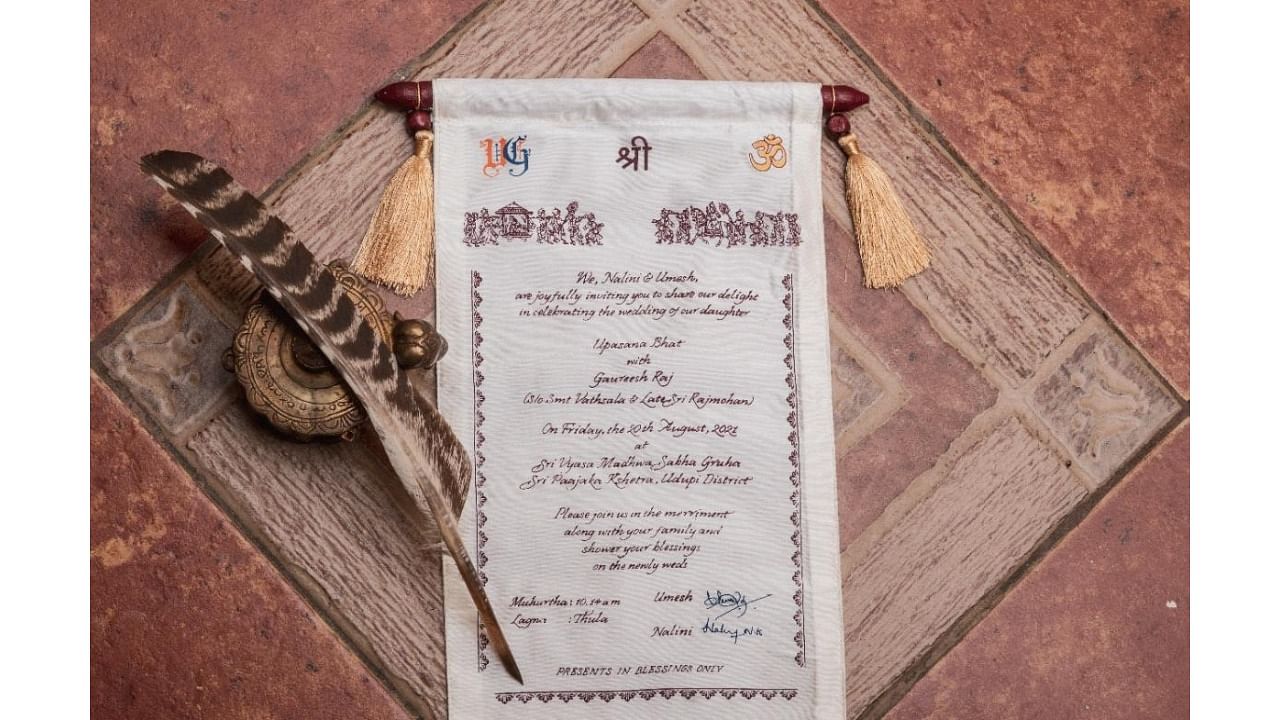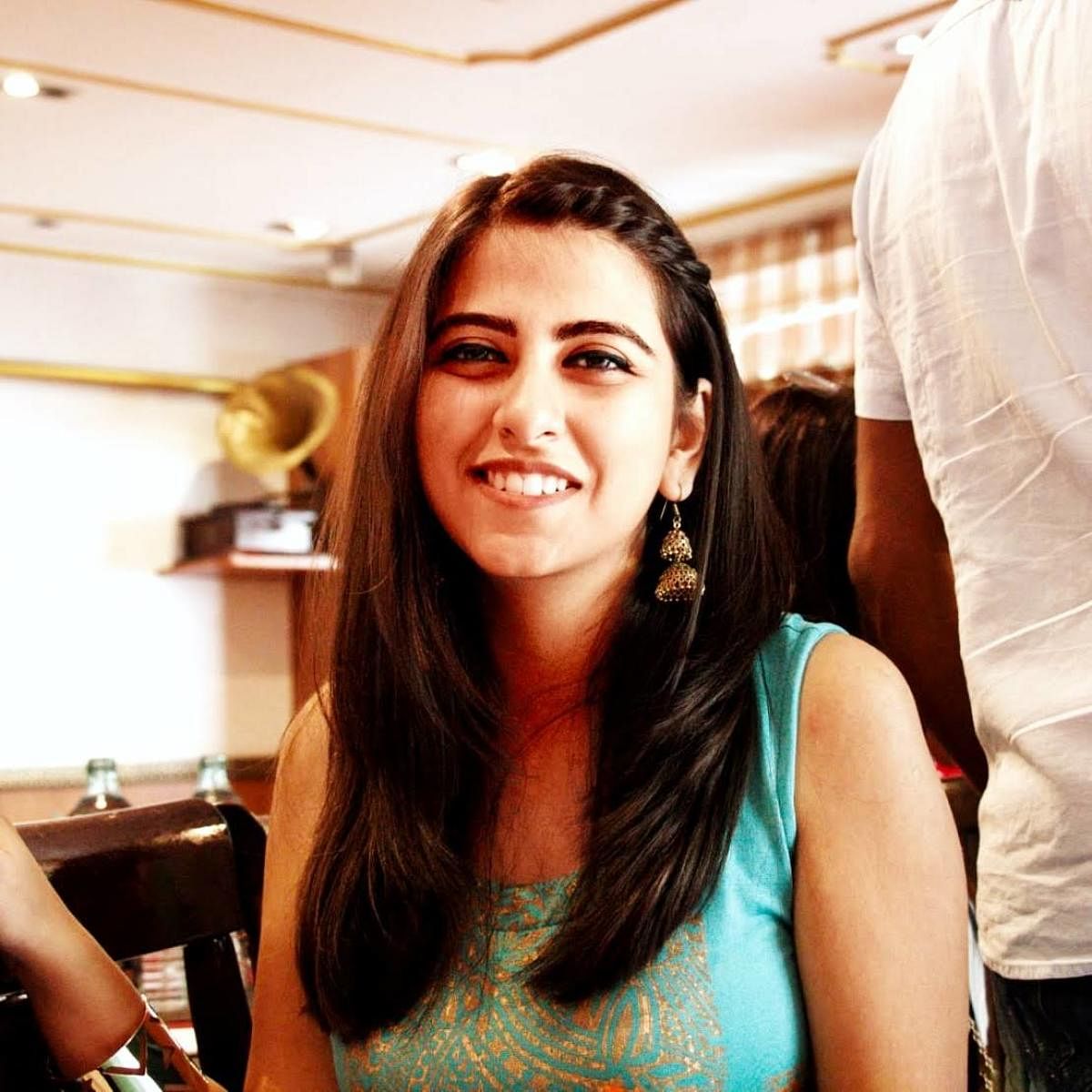

Technology has changed how a lot of art is made today and calligraphy is one such art form undergoing transition. Some changes are welcome, some not so much, say the practitioners. This week, DHonSaturday zooms in on the ancient art of calligraphy which is becoming a common sight on wedding cards, birthday invites, and customised gifts.
Going digital
Karishma Mansukhani, a young calligrapher from Bengaluru, says digital calligraphy is the easiest option to reproduce calligraphy works for print. Plus, you can correct mistakes by just hitting the undo button, she points to the advantage.
Digital calligraphy is usually done on a touch screen device using a stylus. It can also be done on a desktop using software like Adobe Photoshop or Illustrator.
However, seniors in the field have reservations. Bengaluru-based K C Janardhan says, “Personalisation and the attention to detail make calligraphy a special art even today. Digital tools can’t match these.”
Others view digital calligraphy as a lazy approach to the art form. The software auto-corrects a few strokes to make the work look smoother, thus taking away the imperfections that make handmade things endearing and unique.
Digital works may also be setting wrong expectations. “People expect hand-done calligraphy to look the same as the one made on a computer. They expect the fonts and colours to be the same and uniform, which is not possible,” Mumbai-based veteran calligrapher Achyut Palav comments on the modern-day challenges.
Evolution of styles
There is a traditional and modern version to every art form today, remarks Janardhan. “Anything that does not follow the rules of traditionalism is considered modern,” he puts it simply.
Likewise, modern calligraphy doesn’t follow the traditional rules and favours a mix and match of scripts and styles, says Achyut. Breaking these rules allows artists to develop their signature style.
In Karishma’s view, modern calligraphy is whimsical while traditional calligraphy is elegant. “Most of the modern calligraphy styles have evolved from the copperplate script or ‘Roundhand’ (a style where upstrokes are thin and downstrokes are thick). The old and modern styles vary in terms of spacing, slant, and the formation of letters,” says Karishma.
Interestingly, the change of script and style is a result of the changing market demands. “Earlier, calligraphers largely depended on ‘the certificate market’ for remuneration. Today, the market of physical certificates is almost dead. Weddings (cards or invites) are a big market now. Personalised calligraphy holds sentimental value for many,” says Janardhan.
Tools remain the same
Irrespective of whether one practices traditional or modern calligraphy, the tools largely remain the same. These include nibs that are straight, left inclined, and right-inclined. “Newer tools like brush pens have come in but these are used more for lettering than calligraphy,” Janardhan points out. Also, the training remains the same. “First, perfect your handwriting and then move on to lettering to learn how to draw different fonts and understand each style. You can become a calligrapher only after perfecting these,” he adds.
Calligraphy v/s lettering
The two terms are often confused. Lettering refers to the process of drawing or illustrating a letter — you can decorate ‘O’ with flowers, for instance. Calligraphy is the art of writing letters with an artistic flourish — Like adding strokes and loopy ends to letters like ‘A’.
Another difference is readability. Achyut Palav says, “In lettering, readability is the highest priority. The same does not necessarily apply to calligraphy.” In calligraphy, beauty is given preference over legibility, he has come to realise.
The difference lies in the result as much as in the process to get there. “The process of lettering is more rigid compared to calligraphy,” he adds.
History
According to K C Janardhan, calligraphy has been historically linked to multiple countries like China, Japan, India, and Europe. “But the roots of calligraphy mainly lie in the Arab world. Arabic script is among the very few scripts that are flexible enough for calligraphy,” he explains.
Watch latest videos by DH here: